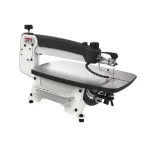Analysis of the impact of five-axis CNC machine tool path planning on the accuracy and efficiency of parts processing
Introduction
In recent years, with the rapid development of manufacturing technology, the demand for high precision and efficiency in parts processing has been continuously increasing. Five-axis computer numerical control (CNC) machine tools have emerged as a popular solution to meet these requirements. The accuracy and efficiency of parts processing on a five-axis CNC machine tool heavily depend on the path planning strategy employed. This article aims to analyze the impact of five-axis CNC machine tool path planning on the accuracy and efficiency of parts processing.
Impact of Path Planning on Accuracy
The path planning strategy used in five-axis CNC machine tools has a significant influence on the accuracy of parts processing. Traditional three-axis CNC machines can only move in three linear axes, limiting their ability to reach all desired machining points. In contrast, five-axis CNC machines have two additional rotary axes, enabling them to access complex surfaces without repositioning the workpiece. Utilizing these additional degrees of freedom effectively requires sophisticated path planning algorithms.
One of the key factors affecting accuracy is the smoothness of the tool path. A well-designed tool path should minimize sudden changes in direction or speed, avoiding jerky movements that can introduce errors. By carefully considering the geometric characteristics of the workpiece and the tool’s capabilities, an optimal tool path can be generated to ensure accurate cutting and machining. Additionally, the selection of suitable interpolation methods, such as linear interpolation or circular interpolation, also plays a crucial role in maintaining accuracy during machining processes.
Impact of Path Planning on Efficiency
The efficiency of parts processing on a five-axis CNC machine tool is highly dependent on the path planning strategy employed. Efficient path planning aims to minimize machining time, tool change time, and overall production costs while ensuring the required accuracy. By optimizing the tool path, unnecessary movements can be reduced, reducing machining time and improving production efficiency.
One approach to increasing efficiency is utilizing proximity-based tool path planning. By grouping together machining operations that can be performed with the same tool or without changing the tool, the number of tool changes can be minimized. This approach not only saves time but also reduces the wear on tooling components, extending their lifespan. Furthermore, by considering the sequence of operations and the accessibility of different machining points, an efficient tool path can be generated to minimize idle time and maximize productivity.
Conclusion
In conclusion, the path planning strategy used in five-axis CNC machine tools has a significant impact on the accuracy and efficiency of parts processing. Effective path planning algorithms can optimize the tool path to ensure high accuracy by reducing jerky motions and considering interpolation methods. Moreover, efficient path planning can minimize machining time, tool change time, and overall production costs by organizing machining operations and optimizing the sequence of operations. It is crucial for manufacturers to carefully consider the path planning strategy employed to achieve accurate and efficient parts processing on five-axis CNC machine tools.
.webp)
